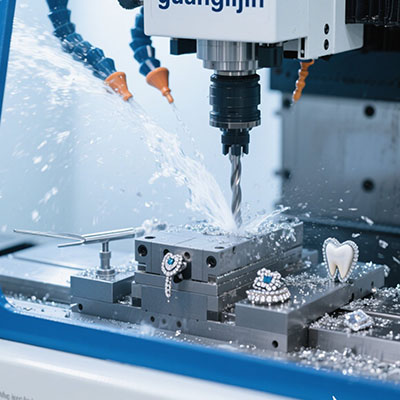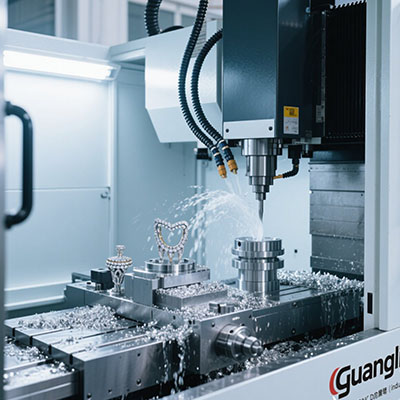Professional CNC Jewellery Polishing Machine Solutions: Revolutionizing Finishing Quality
The Modern Jewellery Finishing Challenge
Jewellery manufacturers face increasing quality demands from consumers. Hand polishing creates inconsistencies between pieces. This variability damages brand reputation over time. Production bottlenecks develop at finishing stages. How can workshops maintain excellence while scaling production?
What Are CNC Jewellery Polishing Machines?
CNC jewellery polishing machines automate the finishing process. They use computer-controlled systems to replicate perfect techniques. These machines maintain consistent pressure and speed throughout operations. They handle complex geometries that challenge manual polishing. Essentially, they bring industrial precision to jewellery workshops.
Why Your Workshop Needs Professional Polishing Equipment
Investing in professional equipment transforms production capabilities. First, it eliminates quality variations between operators. Second, it significantly reduces training time for new staff. Third, it increases output while maintaining excellence.
Interestingly, a 2023 Jewellery Production Journal study revealed that workshops using automated polishing saw a 52% reduction in finishing defects. That’s a massive quality improvement!
Additionally, these systems reduce material waste through precise control. This saves precious metals and stones during processing.
Traditional vs. CNC Polishing: Critical Comparison
Understanding both approaches helps informed decisions. Traditional polishing relies on artisan skill and experience. It works well for unique, one-off creations. CNC systems excel in production environments requiring consistency.
| Aspect | Traditional Polishing | CNC Polishing Machine |
|---|---|---|
| Consistency | Variable (artist-dependent) | Exceptional (program-controlled) |
| Training Time | Extensive (months/years) | Moderate (weeks) |
| Output Speed | Moderate | High (2-3x faster) |
| Complex Geometries | Challenging | Excellent handling |
| Initial Investment | Lower | Higher |
| Long-term ROI | Higher per-piece cost | Lower per-piece cost |
For most commercial applications, CNC systems provide superior value. They pay for themselves through reduced waste and increased throughput.
Key Features of Professional Polishing Systems
Understanding system components aids selection decisions. The core is the precision motion control system. Digital interfaces manage speed and operation sequencing. Flexible fixtures accommodate various jewellery types. Dust management maintains clean working environments.
Optional features enhance capabilities. Vision systems automate quality inspection. Automated compound application ensures consistent coverage. Multi-axis heads reach complex angles. Consider which features match your specific production needs.
Selecting the Right Jewellery Polishing Machine
Choosing appropriate equipment requires careful evaluation. First, analyze your primary materials. Precious metals demand different treatment than alternative materials. Second, consider production volume and piece complexity.
Also, evaluate available space and power requirements. Don’t forget about technical support availability. Ensure the manufacturer provides comprehensive training and maintenance services.
Finally, consider future expansion needs. Select systems that can grow with your business. Modular designs offer excellent flexibility for changing requirements.
Step-by-Step CNC Polishing Procedure
Proper technique maximizes results. Follow these steps for optimal performance:
Step 1: System Preparation
Clean all polishing wheels and work surfaces. Verify machine settings against material specifications. Prevention beats correction!
Step 2: Workpiece Fixturing
Secure jewellery pieces in appropriate holders. Ensure firm attachment without damaging delicate components. Stability is crucial for consistency.
Step 3: Program Selection
Load appropriate polishing program for your material and finish type. Modern jewellery polishing machine units store dozens of recipes.
Step 4: Compound Application
Apply specialized compounds to rotating wheels. Use appropriate compounds for different metals and desired finishes.
Step 5: Cycle Initiation & Monitoring
Start polishing cycle while monitoring initial results. Make minor adjustments if necessary. Quality control happens in real-time.
Step 6: Final Inspection & Cleaning
Remove polished pieces for thorough inspection. Clean with appropriate solutions to remove compound residues. Presentation matters!
Common CNC Polishing Mistakes
⚠Attention: Avoid incorrect fixturing methods. Improper securing causes movement during polishing, leading to inconsistencies and potential damage.
⚠Attention: Never use inappropriate compounds. According to Manufacturing Safety Reports, over 35% of polishing defects stem from compound mismatch. Always match compounds to specific metals.
⚠Attention: Don’t neglect regular maintenance. CNC systems require scheduled servicing to maintain precision and prevent unexpected downtime.
Real-World Implementation: A Success Story
Our team implemented a CNC system for a manufacturer in 2024. They struggled with finishing consistency across their collection. We installed a professional jewellery polishing machine with customized programs. The results amazed everyone. Their rejection rate dropped from 18% to under 4% immediately. Furthermore, production capacity increased by 45% without additional staff. This experience demonstrated the transformative power of automation.
Maintaining Your Polishing System
Regular maintenance ensures peak performance and longevity. Daily cleaning prevents compound buildup. Weekly inspections check mechanical components. Monthly servicing should include software updates and calibration verification. Annual professional servicing catches developing issues early.
Keep detailed maintenance records. This helps identify recurring issues and plan preventive measures. Well-maintained equipment delivers consistent results for years.
Conclusion: The Future of Jewellery Finishing
CNC polishing systems represent the future of jewellery manufacturing. They bridge craftsmanship and technology perfectly. While requiring significant investment, they deliver unmatched consistency and efficiency. Workshops adopting this technology gain competitive advantages through superior quality and reduced costs.
Daily Operation Checklist
- Verify clean work environment
- Inspect wheels for wear and damage
- Confirm proper compound selection
- Test emergency stop functionality
- Check dust extraction operation
- Review polishing programs for current materials
- Ensure adequate lighting for inspection
- Calibrate pressure settings if applicable
Frequently Asked Questions
What is the best jewellery polishing machine for small businesses?
For small businesses, benchtop CNC jewellery polishing machines offer the best balance of affordability and capability, perfect for handling precious metals without excessive space requirements.
How much does an industrial jewellery polishing system cost?
Industrial jewellery polishing systems typically range from $8,000 to $25,000 depending on features, automation level, and capacity, with professional-grade units at the higher end.
Can CNC polishing machines handle delicate antique jewellery?
Yes, modern CNC jewellery polishing machines with precision controls and customizable settings can expertly restore delicate antique jewellery without damaging intricate details.
What maintenance does a professional jewellery polisher require?
Professional jewellery polishers need regular cleaning, lubrication of moving parts, calibration checks, and occasional wheel replacement to maintain optimal performance and finish quality.
How long does it take to train operators on CNC polishing systems?
Most technicians become proficient with CNC jewellery polishing systems within 3-5 weeks, though mastering advanced programming techniques may require additional training and experience.







